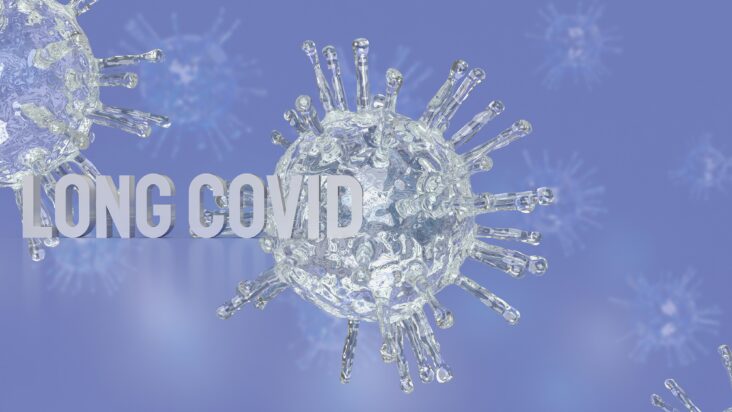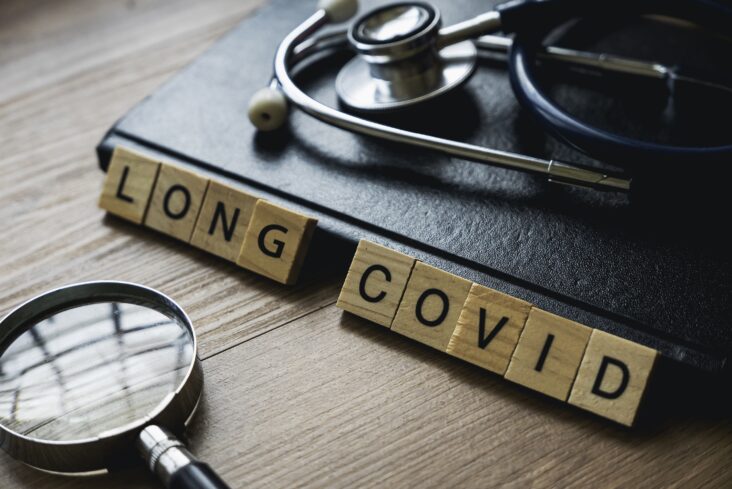COVID-19 was reported in Wuhan, China in December 2019. It is caused by a small novel coronavirus.
The acute phase of COVID-19 infected patients has been well described and may a have varying number of symptoms and intensity.
The majority of patients have fever, sore throat, cough, shortness of breath, and chest pain. Although, multiorgan involvement may become extensive. COVID symptoms may be identified in six clusters [1].
These include:
1. Flu-like with no fever, which consist of headache, loss of smell or taste, cough, muscle pains, sore throat, chest pains.
2. Flu-like with fever, which consists of headache, loss of smell or taste, cough, sore throat, hoarseness, fever, loss of appetite.
3.Gastrointestinal, which consists of headache, loss of smell or taste, loss of appetite, diarrhea, sore throat, chest pain, but no cough.
4. Severe level one, fatigue with headache, loss of smell or taste, cough, fever, hoarseness, chest pain.
5. Severe level two, which consists of confusion with head ache, loss of smell, loss of appetite, cough and fever, hoarse ness, sore throat, chest pain, fatigue, and muscle pain.
6. Severe level three, which is abdominal and respiratory dysfunction with headache, loss of smell or taste, loss of appetite, cough, fever, hoarseness, chest pain, fatigue, sore throat, confusion, muscle pain, diarrhea, shortness of breath and abdominal pain.
The recovery from COVID-19 usually occurs at seven to ten days after the onset of symptoms in mild disease but could take up to six weeks in severe or critical illness.
It is for this reason that mild cases are usually quarantined for between 7-10 days, and severe illnesses are for a more extended period of time.
However, it is believed that even when one is ill for 3-6 weeks, they are probably not actively contagious. Some studies have shown that active coughing is indicative of continuing contagiousness.
This has not been clarified. Studies have shown that household cases support the highest incidences of contagious ness and that rational for masks appears to be most beneficial with close contacts for prevention.
The most common feature of acute illness is interstitial pneumonia, which may in some cases be complicated by the serious acute respiratory distress syndrome where individuals require high doses of oxygen.
This has a high mortality particularly in elderly people who have comorbidities. The cough is usually dry.
Laboratory abnormalities may be present and include low lymphocyte counts, elevated inflammatory markers, such as Sed Rate, C-reactive protein, Ferritin, Interleukin 1 and 6, and Tu mor Necrosis Factor abnormalities, and others, which will be discussed later. Coagulation system abnormalities may occur (to be discussed later).
Clots may form in the acute phase as well as in the subacute phase, especially if there is a history of clots.
Long-Covid Syndrome: A Multi-Organ Disorder Research Article 1 Franklin Cardiovascular Assoc., PA and Autonomic Dysfunction and POTS Center, Sicklerville, NJ, USA 2 Pennsylvania Hospital of the University of Pennsylvania Health System, Philadelphia, PA, USA 3 Neuro-Cardiology Research Corporation, LLC, Wilmington, DE, USA 4 CTO and Sr. Medical Director, Physio PS, Inc., Atlanta, GA, USA Nicholas L DePace1,2,3, Joe Colombo1,3,4* * Corresponding author Joe Colombo, Franklin Cardiovascular Assoc., PA and Autonomic Dysfunction and POTS Center, Sicklerville, NJ and Neuro-Cardiology Research Corporation, LLC, Wilmington, DE, CTO and Sr. Medical Director, Physio PS, Inc., Atlanta, GA, USA. Submitted: 04 Mar 2022; Accepted: 14 Mar 2022; Published: 23 Mar 2022
Copyright: ©2022 Joe Colombo. This is an open-access article distributed under the terms of the Creative Commons Attribution License, which permits unrestricted use, distribution, and reproduction in any medium, provided the original author and source are credited.







